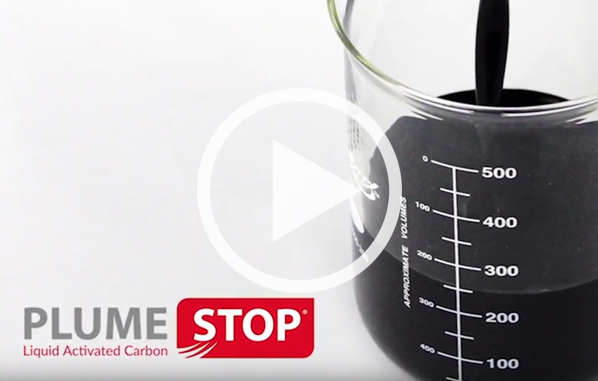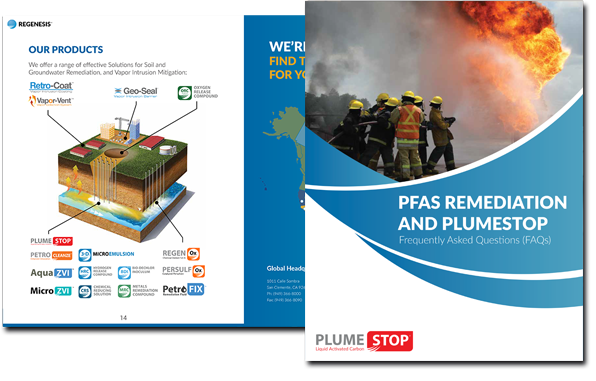
PFOA and PFOS are the two most commonly encountered examples of Per- and Polyfluoroalkyl Substances (PFAS). PFOA and PFOS are abbreviations for the chemicals “perfluorooctanoic acid” (PFOA) and “perfluorooctanesulfonic acid” (PFOS). While government regulations have been passed to eliminate the use of these contaminants in manufacturing and other business practices due to the health risks they pose, these compounds are recalcitrant – or in layperson’s terms, not readily degradable – and as a result are ubiquitous in the environment.
Treatment Solutions for PFAS plumes
There has been an increasing awareness to the widespread contamination associated with per- and polyfluorinated alkyl substances (PFAS). With a lack of effective remediation options to degrade PFAS, including PFOS, PFAS etc., there is an established need to mitigate or eliminate the risk that these contaminants pose, particularly when it comes to their characteristics of being large, dilute plumes with very low regulatory limits. At the present time, the accepted remediation method is to use pump and treat systems, that usually have exorbitant associated costs. Because we cannot (yet) destruct or degrade PFAS efficiently in groundwater, we need to look at innovative strategies, such as elimination of risk, to address these contaminants.
REGENESIS has developed and field-tested an in situ colloidal activated carbon remedy called PlumeStop®, that can cut off and contain PFAS plumes for many years at PFAS contaminated sites. This solution for PFAS plumes forms a cost-effective means to decrease or avoid the operating and maintenance costs of above-ground treatment systems. We are working with several environmental consultancies, problem holders and universities around the world on the challenges that PFAS poses in the environment and have completed a number of successful, field pilot and full-scale applications with colloidal activated carbon. The short video below explains how it works.
Eliminating Risk of Exposure: In Situ Remediation of PFAS in Groundwater
For more information, including the latest site results and case studies, please get in touch. You can also explore more content below:
Third Party Research Article Publications
Two peer-reviewed, third-party research articles have been published in Wiley’s Remediation Journal on in situ PFAS treatment solution using colloidal activated carbon. Click the links below for more info and download the research articles:
RESOURCES
PFAS Groundwater Remediation Strategies
With PlumeStop, remediation professionals gain a solution that will provide an effective, more economical means of stopping the migration of PFAS plumes, thereby protecting sensitive receptors. There are many possible strategies for the in situ containment of PFAS using PlumeStop. Here are some examples:
Strategy #1: Simple Plume Cut-Off Barrier
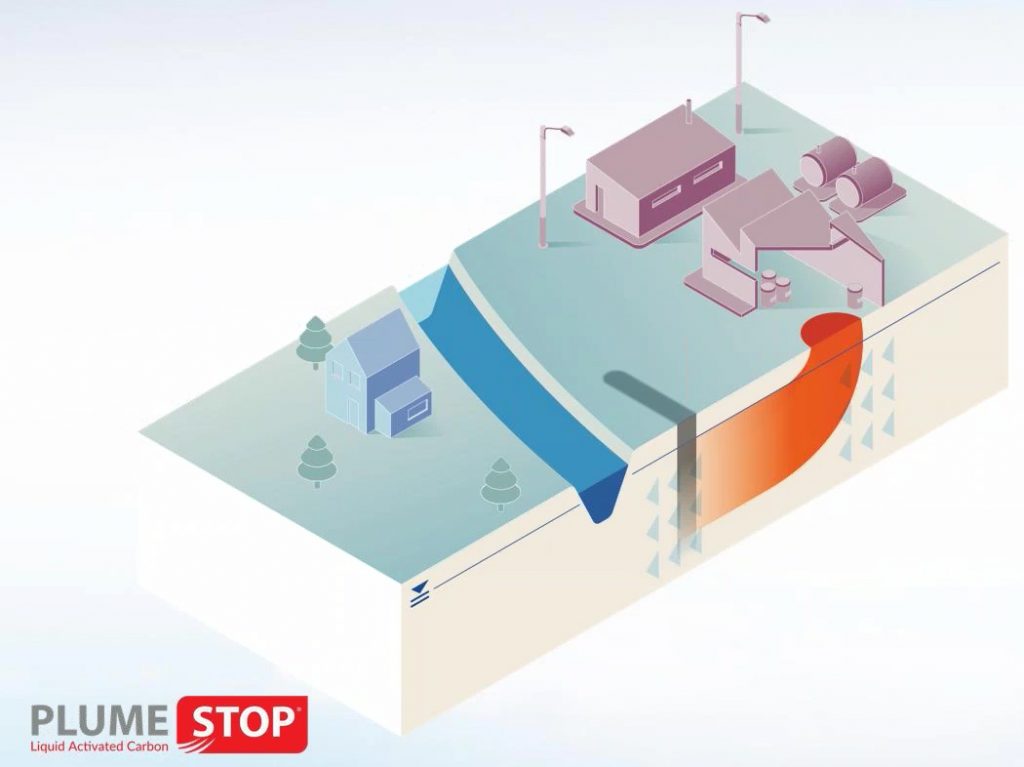
In this application, a single barrier of PlumeStop can be applied to limit plume expansion. The purpose of the application is to protect a property boundary from a plume entering or exiting a site. It can also protect receptors such as a well or water body and minimize the plume in order to contain liability.
Strategy #2: Sequence of Barriers
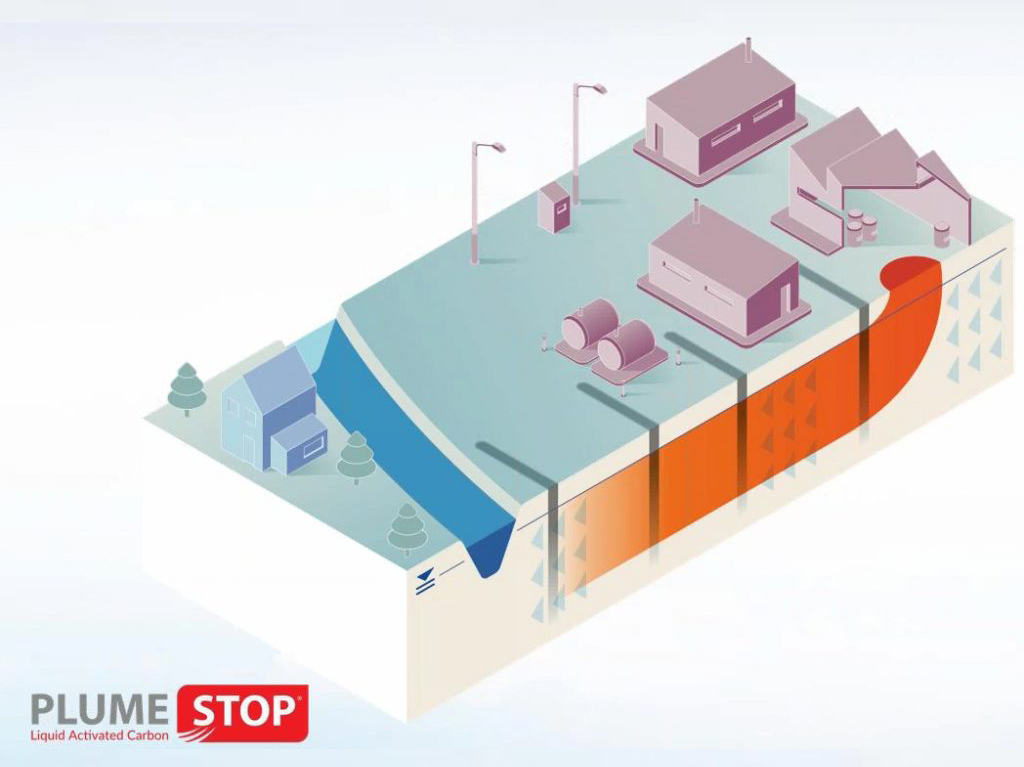
PlumeStop can also be injected as a sequence of multiple barriers designed to progressively eliminate the PFAS plume. The benefits of this approach are that it addresses the entire plume and is particularly suited for large plumes and built up areas with restricted access.
Strategy #3: Localized Receptor Protection
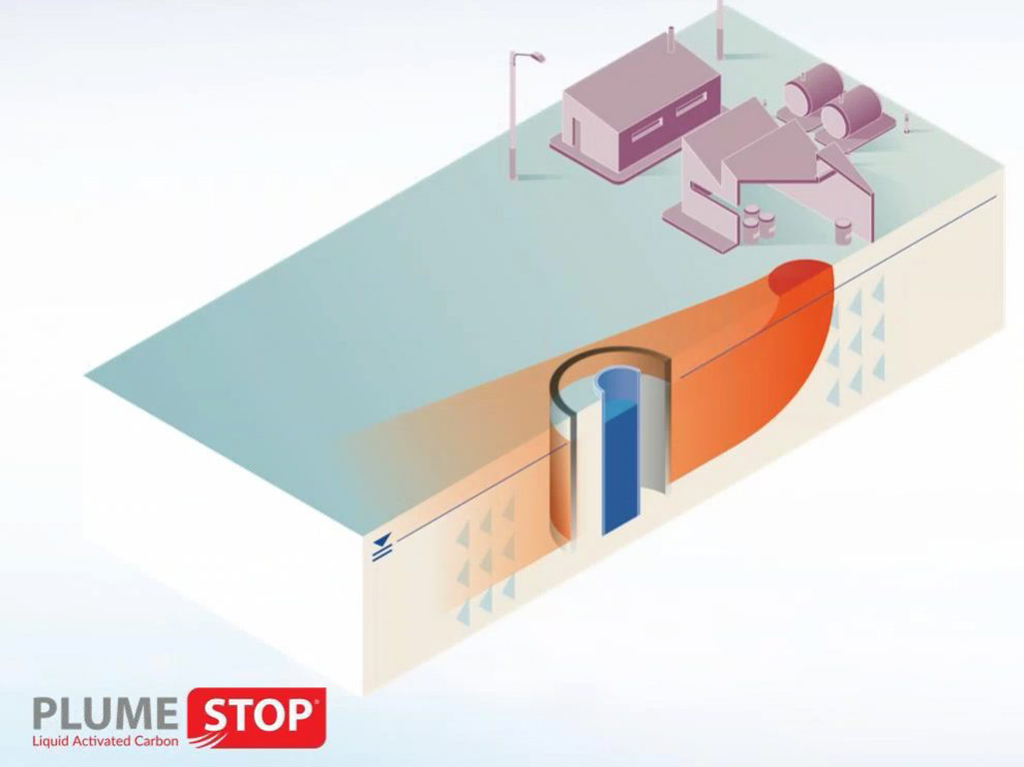
Because PFAS plumes tend to be extremely large and dilute, remediation professionals will likely need to turn to interim measures like this one to protect local receptors. Acting like a “Brita®” filter in the ground, the PlumeStop can be injected around extraction wells to protect them in the event that an entire plume cannot be quickly contained.
Potential Health Effects of PFAS
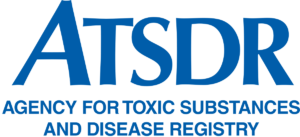 Studies have indicated that PFAS poses potential threats to human health. According to the Agency for Toxic Substances and Disease Registry (ATSDR), a division of the Center for Disease Control (CDC), PFAS can have negative effects on fetal and child development, adult hormones and fertility, high cholesterol, in addition to posing other health risks.
Studies have indicated that PFAS poses potential threats to human health. According to the Agency for Toxic Substances and Disease Registry (ATSDR), a division of the Center for Disease Control (CDC), PFAS can have negative effects on fetal and child development, adult hormones and fertility, high cholesterol, in addition to posing other health risks.
As a result, the US EPA has now started requiring the monitoring of drinking water and set lifetime drinking water advisory levels at 70 parts per trillion (ppt) for PFOA and PFOS. The EPA has also indicated that they will set screening levels and site-specific cleanup levels at Superfund sites, which will be used to determine if long-term groundwater remediation or soil remediation is needed.
Groundwater Treatment of PFAS
 To date, the use of traditional means of groundwater remediation of PFAS plumes has proven difficult. Because they are extremely robust compounds, remediation technologies such as in situ chemical oxidation (ISCO) and various forms of bioremediation have been unable to address these contaminants. The most prevalent method at this time is to use an ex situ pump and treat system with activated carbon filters. However, this process can prove very expensive and challenging due to the extremely wide-area, dilute formation of the most common PFAS plumes.
To date, the use of traditional means of groundwater remediation of PFAS plumes has proven difficult. Because they are extremely robust compounds, remediation technologies such as in situ chemical oxidation (ISCO) and various forms of bioremediation have been unable to address these contaminants. The most prevalent method at this time is to use an ex situ pump and treat system with activated carbon filters. However, this process can prove very expensive and challenging due to the extremely wide-area, dilute formation of the most common PFAS plumes.
REGENESIS has developed an in situ remediation product called PlumeStop® Liquid Activated Carbon™ that has the potential to solve the challenges faced in the groundwater remediation of PFAS. This technology can be applied under low-pressure injection, which solves the problem of excessive costs incurred with pump and treat systems. Through the use of a proprietary organic polymer dispersion chemistry, the activated carbon achieves high distribution through the subsurface and removes contaminants like PFAS rapidly from groundwater.
Research Article: Breakthrough Treatment for PFAS
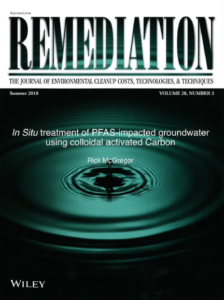 This article published in Wiley’s Remediation Journal reviews a site impacted with petroleum hydrocarbons, perfluorooctane sulfonate (PFOS), perfluorooctanoic acid (PFOA), and other perfluoroalkyl sulfonates (PFAS). A single application of PlumeStop resulted in a significant reduction of contaminant concentrations to below standards for 18+ months since the injection. Modeling indicates that the PlumeStop application event should keep the PFAS contained within the source area for upwards of 100 years. Details of the remedial design approach are provided along with results of its implementation.
This article published in Wiley’s Remediation Journal reviews a site impacted with petroleum hydrocarbons, perfluorooctane sulfonate (PFOS), perfluorooctanoic acid (PFOA), and other perfluoroalkyl sulfonates (PFAS). A single application of PlumeStop resulted in a significant reduction of contaminant concentrations to below standards for 18+ months since the injection. Modeling indicates that the PlumeStop application event should keep the PFAS contained within the source area for upwards of 100 years. Details of the remedial design approach are provided along with results of its implementation.
Evaluating the Longevity of a PFAS In Situ Colloidal Activated Carbon Remedy
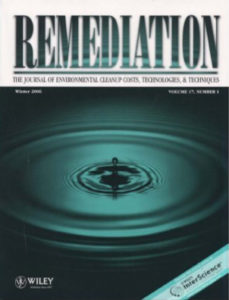 This article published in Wiley’s Remediation Journal uses various visualization and modeling methods to evaluate the in-situ remediation of PFAS via colloidal activated carbon (CAC) at a site in Central Canada. A three-dimensional reactive transport model (ISR-MT3DMS) was used to indicate that the CAC remedy implemented at the site is likely to be effective for PFOS remediation for decades. The research article concludes that due to the relatively low cost to implement the CAC, and the ability to adapt the remedy in the future, this remediation approach may be viable at other PFAS sites.
This article published in Wiley’s Remediation Journal uses various visualization and modeling methods to evaluate the in-situ remediation of PFAS via colloidal activated carbon (CAC) at a site in Central Canada. A three-dimensional reactive transport model (ISR-MT3DMS) was used to indicate that the CAC remedy implemented at the site is likely to be effective for PFOS remediation for decades. The research article concludes that due to the relatively low cost to implement the CAC, and the ability to adapt the remedy in the future, this remediation approach may be viable at other PFAS sites.
Pilot Test Conducted to Remove PFAS Risk
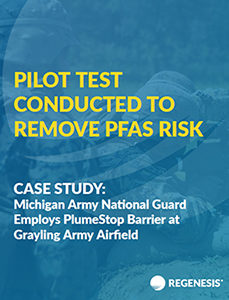 This case study reviews a pilot test to remove PFAS risk via an in situ colloidal activated carbon barrier at Camp Grayling in Michigan, US – a large year-round military training center operated by the Michigan National Guard (MIARNG). Colloidal activated carbon was selected because of the expected rapid reductions of PFAS by removal from the dissolved mobile phase, as well as its expected lower total project costs when compared to operating a mechanical system over a similar time. The MIARNG decided to conduct a PlumeStop pilot test to determine if this treatment would meet their site goals prior to a possible full-scale application. The goals for this pilot project were to utilise an approach that could both protect the Grayling community from exposure and cost-effectively expand to a full-scale application.
This case study reviews a pilot test to remove PFAS risk via an in situ colloidal activated carbon barrier at Camp Grayling in Michigan, US – a large year-round military training center operated by the Michigan National Guard (MIARNG). Colloidal activated carbon was selected because of the expected rapid reductions of PFAS by removal from the dissolved mobile phase, as well as its expected lower total project costs when compared to operating a mechanical system over a similar time. The MIARNG decided to conduct a PlumeStop pilot test to determine if this treatment would meet their site goals prior to a possible full-scale application. The goals for this pilot project were to utilise an approach that could both protect the Grayling community from exposure and cost-effectively expand to a full-scale application.
In Situ Remedy Addresses PFAS Risk at Superfund Site
 This case study reviews remedial programs undertaken at the Solvents Recovery Service of New England (SRSNE), US, where soil and groundwater were contaminated with VOCs and PFAS contaminants. In 2018, an innovative remedial approach incorporated natural attenuation with the use of PlumeStop® to work with an existing sheet pile structure to limit the mobility of the plume and effectively treat contaminant concentrations. PlumeStop quickly reduced PFOS/PFOA levels and in combination with AquaZVI® eliminated VOC contaminant concentrations. It is estimated that the PRP group involved will save $400,000 annually with the shut down of the pump and treat system on site.
This case study reviews remedial programs undertaken at the Solvents Recovery Service of New England (SRSNE), US, where soil and groundwater were contaminated with VOCs and PFAS contaminants. In 2018, an innovative remedial approach incorporated natural attenuation with the use of PlumeStop® to work with an existing sheet pile structure to limit the mobility of the plume and effectively treat contaminant concentrations. PlumeStop quickly reduced PFOS/PFOA levels and in combination with AquaZVI® eliminated VOC contaminant concentrations. It is estimated that the PRP group involved will save $400,000 annually with the shut down of the pump and treat system on site.
Webinar Series on PFAS– Assessment, Treatment Options & Lessons Learned
 REGENESIS has been working with several consultancies, problem holders and universities around the world on the challenges that PFAS poses in the environment. Together, we have completed a number of successful laboratory, pilot and full-scale applications.
REGENESIS has been working with several consultancies, problem holders and universities around the world on the challenges that PFAS poses in the environment. Together, we have completed a number of successful laboratory, pilot and full-scale applications.
In our PFAS webinar series, guest speakers explain more about these challenging contaminants, including lessons learned during site investigation, in situ remediation and modelling tools for treatment evaluation.
Additional PFAS Resources:
Interested in learning more about PlumeStop and PFAS?
- Watch an animation explaining the in situ remediation of PFAS, using PlumeStop Liquid Activated Carbon
- Download the PlumeStop Technical Bulletin 5.1
- Watch a video featuring REGENESIS Research and Development Director Kristen Thoreson on the remediation of PFAS
- Access PFAS webinar series

 Americas
Americas Europe
Europe Français
Français Deutsch
Deutsch Italiano
Italiano Español
Español